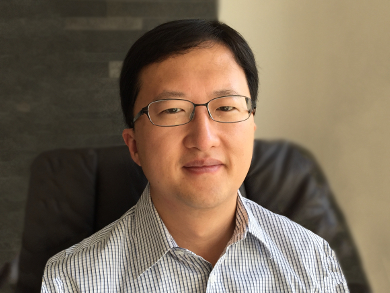Dr. Claire Cobley, Managing Editor of ChemNanoMat, talks to Professor Jang Wook Choi, Korea Advanced Institute of Science and Technology (KAIST), Daejeon, about his interest in energy storage research. Jang Wook Choi is an Editorial Board Member of ChemNanoMat and Guest Editor of a recent special issue on “Nanomaterials for Energy Conversion and Storage”. He discusses how challenging it will be to meet the world’s increasing energy demand without sacrificing the environment, and how to find the right problem to tackle as a researcher in order to make an impact.
How did you become interested in energy conversion and storage research?
During my Ph.D, I was not directly involved in energy materials research. At that time, the topic covered electrochemistry and semiconductor-based devices. Once I learned that rechargeable batteries are a topic that I can contribute to significantly with my background, I became extraordinarily interested in the field.
Society needs electrical vehicles for many reasons, but lithium-ion batteries, the core component for the technology, are still insufficient in terms of driving mileage and charging speed. Since it is always exciting to work on challenging, high-impact problems, I believe I will enjoy working in the field for the time being.
What are the biggest challenges ahead in powering the world?
The situation is straightforward. We all know that we want to save our environment while we continue advancing our technology. However, these two are usually contradictory. A high-tech lifestyle requires more energy, with an increasing possibility of impairing the environment, so we should develop a way of generating and distributing energy in a green and economically viable way. Based on this consensus, the biggest challenge in powering the world is how to generate and use energy in an economically competitive way without sacrificing our environment. Along the way, a materials revolution must make the journey much easier.
A lot has happened in the field of energy conversion and storage over the past ten years. What do you feel are the most significant advances made in this time?
Right, we have made a substantial progress in the past ten years. We now have a deeper understanding of the fundamentals on the materials level. Using a variety of analysis tools, we can better understand individual events during energy conversion and storage, such as electron-hole pair generation, charge transport, charge decay, and ionic transport and storage, both on the surface and inside of the material.
Another significant advance is related to practical viability: We have learned that the materials with the best performance may not be adopted as a “champion” technology if they are not scalable in terms of cost, material abundance, and processing. I feel that the current ongoing research is in much better shape in balancing all these critical aspects.
How important are interdisciplinary collaborations for your work?
Research related to energy conversion and storage is not totally new. That means that a good portion of each area has been investigated for a while, and a certain level of solutions is already available. In order to go beyond, we now need to approach problems from different angles, and for this, interdisciplinary collaboration is very effective.
In most cases, simple solutions already exist in other scientific areas, but are not simply transferred to the given problem due to a lack of communication. My area, rechargeable batteries, is not a new field. But the technological progress in the past years is rather slow. I believe that many revolutionary solutions can emerge from collaborative research.
What advice would you give to young scientists who are starting their own independent research careers?
Find important problems and define them clearly. There is an infinite number of scientific and technological problems, and one individual can’t solve all of them. Within the limited amount of time, it is very important to find the right problem so that one can create motivation and interest. Once any useful results come out for an important problem, the impact is even more significant, benefiting many people, which adds further to motivation. If you don’t define the problem clearly, you could get stuck on many unrelated hurdles, although some of those are not actually related to solving the problem.
- Special Issue: Nanomaterials for Energy Conversion and Storage,
ChemNanoMat 2016, 2 (7). - Editorial: Nanomaterials for Energy Conversion and Storage,
Jang Wook Choi, Donghai Wang, Dunwei Wang,
ChemNanoMat 2016, 2, 560–561.
DOI: 10.1002/cnma.201600177




